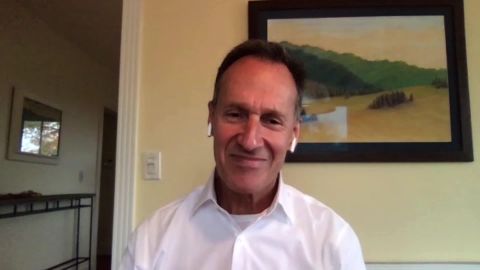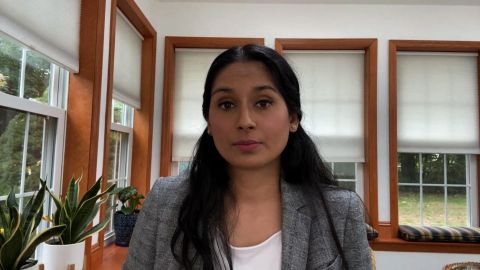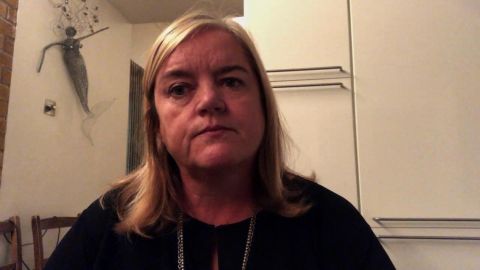Read Transcript EXPAND
DR. SYRA MADAD, SENIOR DIRECTOR, SPECIAL PATHOGENS PROGRAM, NYC HEALTH + HOSPITALS: You know, New York is in a much better position than we were as the nation’s first epicenter. So, we’ve been able to contain the number of cases and hospitalizations, but you can’t say that for the rest of the nation. And as we know, we don’t just have one pandemic here in the United States, we have 50 epidemics playing out differently in each of these states. And so, for just looking at data, and, you know, the data doesn’t lie, and you’re looking at multiple metrics. You have majority of the United States with a lot of viral infection, over 48 states, you know, are kind of in that orange to red zone. It’s very, very, you know, distressing to see it. Not only are we seeing more cases, more infections, but you’re also seeing the associate hospitalizations increase as well, and that’s a very troubling sign.
CHRISTIANE AMANPOUR: So, we’re seeing the map that you’ve been describing, you know, there’s only really one green map, one green area which shows going down. There’s only 12 states that are holding steady and the rest are all going up. And in Europe, we know that, you know, we’re seeing this map of a 7-day moving average. I mean, the number of cases has just shot up compared to earlier this year. When you hear whether it’s the U.S. chief of staff saying, we can’t get and we’re not going to get this under control, whether it’s in France officials saying that it’s out of control, those words, out of control, can’t get it under control, these are new to me particular in the second wave. What has happened that has made the second wave seemingly so bad, certainly in Europe?
MADAD: Well, I think it was multiple factors here at play. So, I think the first thing is we have the tools. We have the knowledge to contain COVID-19. And I think that speaks for the entire world. We know how to contain it. It’s these tried and true public health measures that we’ve used for multiple different epidemics and pandemics in the past, and this is obviously having a good testing (INAUDIBLE) to find cases, being isolate them. You know, contact tracing. Being able to provide the support services. So, it’s not, you know, magic. We know how to do it. We know what to do. We just need to invest in the resources behind it. And what you’re seeing now is when you don’t have that infrastructure, and on top of that, you’re adding onto this contagion of misinformation, disinformation, now following public health guidance, not allowing people, giving them the right information in a good crisis communication mechanism to constantly wear — you know, continuously wear a mask, you know, watch their distance, washing their hands, good ventilation. If you’re not articulating that appropriately, you’re going to see more cases. And you’re seeing that play out across the world, here in the U.S. as well as in Europe. So, a lot of factors here at play but we have the tools to get this under control. What you’re seeing is the white flag go up and people just saying that we can’t control it, you know, this is something that, you know, it’s not just possible. But we have examples in front of us where it is possible.
About This Episode EXPAND
Dr. Syra Madad discusses the trajectory of the pandemic in the coming weeks. Louise Casey, a former UK government adviser on homelessness, explains how COVID-19 has exposed a massive inequality gap. Dr. Richard A. Friedman explains the impact of the COVID-19 pandemic on mental health.
LEARN MORE


